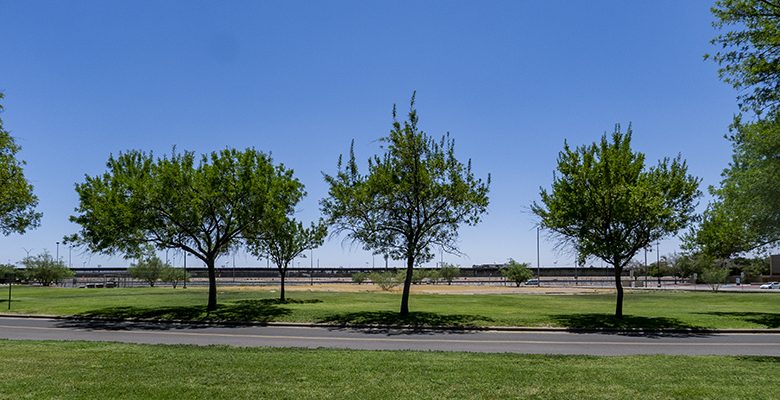Here’s a long read from ProPublica and the New York Times Magazine:
Conjoined to the Mexican city of Juárez, the El Paso area is the second-largest binational metroplex in the Western Hemisphere. It sits smack in the middle of the Chihuahuan Desert, a built-up oasis amid a barren and bleached-bright rocky landscape. Much of its daily workforce commutes across the border, and Spanish is as common as English.
Downtown, new buildings are rising in a weary business district where boot shops and pawnshops compete amid boarded-up and barred storefronts. The only barriers between the American streets — home to more than 800,000 people — and their Juárez counterparts are the concrete viaduct of a mostly dry Rio Grande and a rusted steel border fence.
To some migrants, this place is Eden. But El Paso is also a place with oppressive heat and very little water, another front line in the climate crisis. Temperatures already top 90 degrees here for three months of the year, and by the end of the century it will be that hot one of every two days. The heat, according to researchers at the University of California, Berkeley, will drive deaths that soon outpace those from car crashes or opioid overdoses. Cooling costs — already a third of some residents’ budgets — will get pricier, and warming will drive down economic output by 8%, perhaps making El Paso just as unlivable as the places farther south.
In 2014, El Paso created a new city government position — chief resilience officer — aimed, in part, at folding climate concerns into its urban planning. Soon enough, the climate crisis in Guatemala — not just the one in El Paso — became one of the city’s top concerns. “I apologize if I’m off topic,” the resilience chief, Nicole Ferrini, told municipal leaders and other attendees at a water conference in Phoenix in 2019 as she raised the question of “massive amounts of climate refugees, and are we prepared as a community, as a society, to deal with that?”
“Cooling costs — already a third of some residents’ budgets — will get pricier, and warming will drive down economic output by 8%, perhaps making El Paso just as unlivable as the places farther south.”
I’m sure these social scientists didn’t factor Triple A baseball and the Quality of Life projects into their models.
Am I right?


Sad that the “resilience officer” apparently is no longer!
Really? Her job was funded by a Rockefeller grant, I think.
I guess the grant ran out?
The city website still lists her and her position as current:
https://www.elpasotexas.gov/ors/about-us/sustainability-staff
Why not??? 🙁
If cooling costs are so prohibitive, why the hell would this be a refuge? Maybe we all need to relocate to Ruidoso, or Silver City, or Cloudcroft?
Cooling costs? Is that another word for electricity? My electric bill hist almost $500 for one or two months in the summer. I could tough it out and not use the air conditioner so much. I doubt that would be fatal. Anyone whose income is $1500 (500 X 3) probably doesn’t have a large house to cool, and anyone earning less than that probably doesn’t have an air conditioner.
I am curious, then, as to whose “cooling costs” are 1/3 of their income and what percentage of the population that might be in reality. The math doesn’t seem to match the claims made in the article.
Nicole Ferrini was an interior designer before going to work for the city, how does that equate to being a climate expert?
LOL. Nicole Ferrini, interior designer. Yeah, climate expert for the interior of a nice temperature control building during work and home afterwards. All designed under the “fleecing of America”.
In the 1960’s “scientists” said we would freezing by now and eating soylent green stuff.